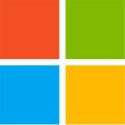
GIGABYTE Unveils Enterprise-grade Motherboards and an Entry Level Workstation for the Launch of AMD Ryzen 7000 Series
GIGABYTE Technology, (TWSE: 2376), an industry leader in high-performance servers and workstations, today announced supporting products for the new AMD AM5 platform starting with two GIGABYTE motherboards, MC13-LE0 & MC13-LE1, that pair a consumer CPU with IPMI management functionalities via BMC. Additionally, a new desktop workstation, W332-Z00, was released using the same motherboard series platform that supports remote management, but the W332 does so with a Realtek NIC that enables DASH.
The new GIGABYTE products designed to support host systems are deceivingly powerful with a small micro-ATX form factor motherboard and enterprise rich out-of-band management features on top of PCIe Gen 5 and DDR5 technologies. These new client friendly products will be found in office settings under a desk rather than a rack in a data center, as they be managed from anywhere, provided there is a network connection. Furthermore, these new products are purpose built for the mainstream AMD B650E chipset with AMD Zen 4 architecture for AMD Ryzen 7000 Series desktop processors.
The new GIGABYTE products designed to support host systems are deceivingly powerful with a small micro-ATX form factor motherboard and enterprise rich out-of-band management features on top of PCIe Gen 5 and DDR5 technologies. These new client friendly products will be found in office settings under a desk rather than a rack in a data center, as they be managed from anywhere, provided there is a network connection. Furthermore, these new products are purpose built for the mainstream AMD B650E chipset with AMD Zen 4 architecture for AMD Ryzen 7000 Series desktop processors.





















































